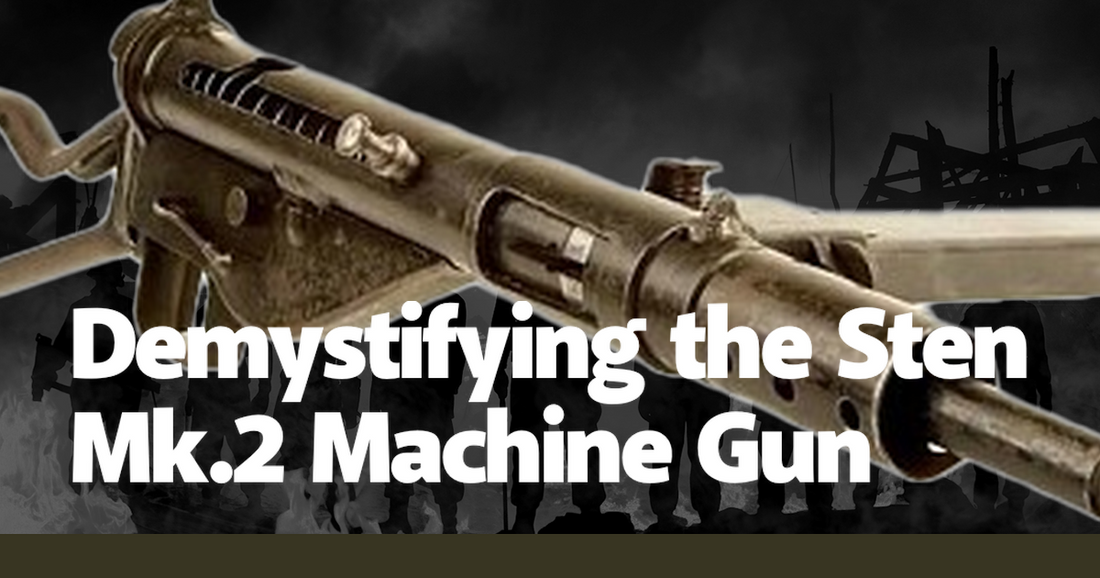The Sten Mk.2 machine gun, a symbol of British ingenuity during World War II, remains an iconic yet often misunderstood weapon. Developed out of necessity, its design and impact on the war effort are nothing short of remarkable. The Sten Mk.2 emerged in response to the dire need for a cost-effective, easily manufactured submachine gun as Britain faced the daunting might of Nazi Germany. Its simplicity was both its strength and its Achilles' heel, making it an intriguing subject for military historians and enthusiasts alike.
The Sten Mk.2 was born in an era of desperation. In 1940, the British Army had suffered significant losses of equipment during the Dunkirk evacuation. The pressing need for a rapid solution led to the creation of the Sten, named after its designers, Major Reginald Shepherd and Harold Turpin, and the Enfield factory where it was first produced. Unlike the intricate and expensive Thompson submachine gun used by American forces, the Sten Mk.2 was a marvel of minimalist engineering, with a design that prioritized ease of production and cost-efficiency. Comprising just 47 parts, it could be manufactured quickly and cheaply, making it an ideal weapon for a nation under siege.
The Sten Mk.2's design was starkly utilitarian. It featured a simple blowback operation, a side-mounted magazine, and a rudimentary tube-like appearance. While its aesthetics were far from impressive, its functionality was undeniable. The 9mm Parabellum rounds it fired were effective at close range, making it a formidable weapon in urban combat and guerrilla warfare. The Sten Mk.2's compact size and light weight also made it highly portable, a crucial advantage for paratroopers and resistance fighters operating behind enemy lines. Its ability to be disassembled and reassembled with minimal tools added to its appeal, allowing soldiers to maintain and repair their weapons in the field.
However, the Sten Mk.2 was not without its flaws. Its simplicity, while advantageous in many respects, also led to reliability issues. The side-mounted magazine was prone to jamming, and the weapon's lack of safety features made accidental discharges a constant risk. Anecdotes from the field tell of soldiers inadvertently firing their Stens while climbing into vehicles or even while simply handling the weapon carelessly. Despite these drawbacks, the Sten Mk.2's benefits often outweighed its shortcomings, particularly in the context of the desperate circumstances under which it was employed.
One of the most compelling aspects of the Sten Mk.2's history is its use by resistance movements across occupied Europe. The simplicity of its design meant that it could be produced in clandestine workshops, far from the eyes of German occupiers. Stories abound of French, Polish, and Norwegian partisans using Stens to great effect in sabotage operations and ambushes. The weapon's role in the Warsaw Uprising of 1944 is particularly noteworthy. Despite being outgunned and outnumbered, Polish resistance fighters wielding Sten Mk.2s managed to inflict significant damage on German forces, a testament to the weapon's effectiveness in the hands of determined fighters.
The Sten Mk.2 also saw extensive use in the hands of British and Commonwealth forces. It became a staple of the British Army, with over four million units produced by the war's end. Its role in the D-Day landings and subsequent liberation of Europe cannot be overstated. Paratroopers dropping into Normandy were often equipped with Stens, their compact size and firepower making them ideal for the airborne assault. First-hand accounts from veterans describe the Sten as a weapon that inspired both confidence and caution, its quirks well-known but its utility undeniable in the chaos of battle.
Post-war, the Sten Mk.2 continued to see service in conflicts around the globe. Its low cost and ease of production made it a popular choice for newly independent nations and insurgent groups alike. From the jungles of Vietnam to the deserts of the Middle East, the Sten Mk.2's legacy endured. Its influence can be seen in the design of later submachine guns, such as the Israeli Uzi and the British Sterling, both of which borrowed elements from the Sten's straightforward, utilitarian approach.
In retrospect, the Sten Mk.2 was more than just a weapon; it was a symbol of resilience and resourcefulness. Its creation underlines the ingenuity that can arise from necessity, and its widespread use highlights the adaptability of military forces in the face of adversity. While it may never have achieved the legendary status of some of its contemporaries, the Sten Mk.2's contribution to the Allied war effort is undeniable. Its story is a reminder that in the crucible of war, sometimes the simplest solutions are the most effective.

